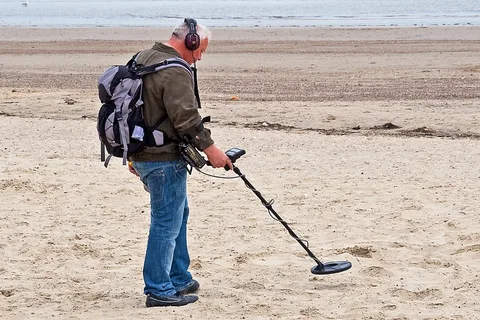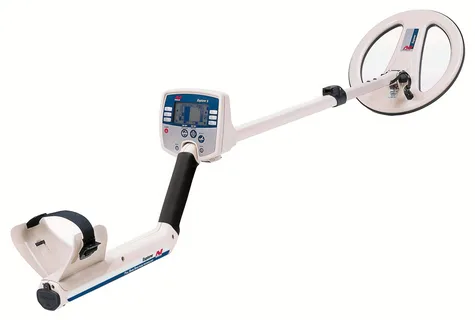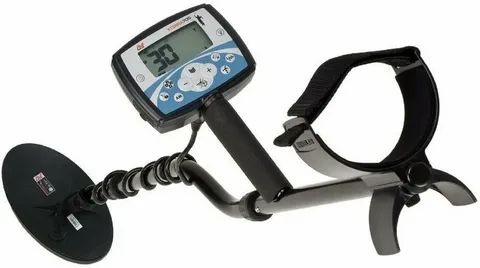Gold Detector technology has revolutionized the way we search for hidden treasures. With the latest advancements in gold detector technology, it has never been easier to uncover valuable finds. Whether you are a professional treasure hunter or a hobbyist, the best gold detector technology will ensure that you can find gold and other precious metals with ease. In this article, we will explore the benefits of using the best gold detector technology and how it can help you uncover hidden treasures.
Uncover hidden treasures with the best gold detector technology, designed to accurately locate and identify gold deposits in various terrains. This advanced technology uses state-of-the-art features and capabilities to maximize your chances of discovering valuable gold artifacts. Whether you’re a hobbyist or a professional treasure hunter, invest in the best gold detector technology to enhance your search for hidden treasures. With the latest advancements in gold detection, you can confidently explore new areas and unearth valuable gold assets. Don’t miss out on the opportunity to uncover hidden treasures with cutting-edge gold detector technology.
Top 10 Gold Detectors for 2021: A Complete Guide

The article “Top 10 Gold Detectors for 2021: A Complete Guide” provides detailed information about the best gold detectors available in the market for the year 2021. It includes comprehensive reviews of each detector, highlighting their features, specifications, and performance. The guide aims to assist gold prospectors in making an informed decision when selecting a gold detector, based on their specific needs and budget. The detectors featured in the guide are chosen based on their sensitivity to gold, depth and accuracy of detection, user-friendly design, and overall value for money. Whether you’re a beginner or a seasoned prospector, this guide offers valuable insights to help you find the best gold detector for your next adventure.
Choosing the Right Gold Detector for Your Treasure Hunting Needs

When choosing the right gold detector for your treasure hunting needs, it is important to consider factors such as the type of terrain you will be detecting in, the size of the gold nuggets you are looking for, and your budget. Different detectors are designed for different purposes, and some are better suited for gold prospecting than others. It is also important to consider the sensitivity and discrimination capabilities of the detector, as well as its ease of use and durability. Researching and comparing different models, reading reviews, and seeking advice from experienced detectorists can help you make an informed decision. Additionally, consider purchasing from a reputable dealer who offers support and warranties for their products. Ultimately, the right gold detector for you will depend on your specific needs and preferences, so take the time to find the best fit for your treasure hunting adventures.
The Benefits of Using a Gold Detector for Prospecting and Exploration

Gold detectors are useful tools for prospecting and exploration as they can help to identify gold deposits that would be otherwise difficult to locate. They are designed to specifically detect the presence of gold, making them highly effective for use in areas where gold is likely to be found. By using a gold detector, prospectors and explorers can save time and effort by quickly narrowing down potential locations for further investigation. Additionally, gold detectors can also help to maximize the efficiency of a gold prospecting or exploration operation by increasing the chances of finding valuable deposits. Overall, the use of a gold detector can greatly improve the success rate of prospecting and exploration activities.
How to Use a Gold Detector: Tips and Techniques for Success

Using a gold detector requires some technique and understanding of how the device works. Here are some tips for using a gold detector successfully:
1. Familiarize yourself with the controls: Before you start using the gold detector, take the time to read the user manual and understand how to operate the device. Familiarize yourself with the controls and settings so that you can make adjustments as needed.
2. Choose the right location: Gold detectors work best in areas where gold is known to be present, such as old mining sites, rivers, and beaches. Look for locations with a history of gold mining or areas where natural gold deposits are likely to be found.
3. Adjust the settings: Depending on the specific model of gold detector you are using, you may need to adjust the settings to match the conditions of the location you are searching. This may include adjusting the sensitivity, ground balance, and discrimination settings.
4. Proper sweeping technique: When searching for gold, it’s important to sweep the detector coil in a slow and controlled manner, keeping it close to the ground. Overlapping your sweeps can ensure thorough coverage of the area.
5. Use headphones: Using headphones while detecting can help you hear faint signals more clearly, especially in noisy environments. This can make it easier to detect small or deep targets.
6. Learn to distinguish signals: Familiarize yourself with the different signals produced by the detector and learn to distinguish between signals that indicate the presence of gold and those that do not.
7. Take your time: Gold detecting requires patience and persistence. Take your time to thoroughly search an area and pay attention to any faint signals that may indicate the presence of gold.
By following these tips and techniques, you can increase your chances of success when using a gold detector. Remember, practice and experience will also play a key role in improving your ability to find gold.
The Best Places to Use Your Gold Detector for Maximum Results
Gold detectors can be used with great success in a variety of locations, including gold mining areas, old gold mine tailings, and areas where gold has been found in the past. In addition, gold detectors can also be used on beaches, in parks, and in natural waterways where gold flakes and nuggets may have been deposited. Areas where old civilizations once thrived, such as ancient ruins or buried treasure sites, can also yield excellent results with a gold detector. Additionally, areas where prospectors have historically found gold, such as along riverbeds or in remote wilderness areas, can be prime locations for using a gold detector to maximum effect.
Maximizing Your Gold Detector’s Potential: Dos and Don’ts
See also: gold detector price
Here are some dos and don’ts to maximize the potential of your gold detector:
Dos:
1. Research and understand the capabilities of your specific gold detector model.
2. Practice using the detector in various terrains to improve your skills.
3. Learn how to properly ground balance and fine-tune your detector for optimal performance.
4. Keep your detector well-maintained and clean to ensure accurate readings.
5. Use headphones to minimize outside interference and maximize your ability to hear subtle signals.
Don’ts:
1. Don’t overlook the importance of reading the user manual and understanding the settings and features of your detector.
2. Avoid ignoring small or faint signals, as they could be indications of buried gold.
3. Don’t hastily dig up every signal without verifying its consistency and strength.
4. Avoid neglecting to regularly calibrate and update your detector’s software if applicable.
5. Don’t rush or become impatient while using your gold detector. Take your time to thoroughly scan an area for potential targets.
The Evolution of Gold Detectors: From Past to Present
The evolution of gold detectors has seen significant advancements from the past to the present. In the past, gold detectors were simple, manually operated devices that relied on basic technologies such as induction-based metal detection. These early detectors were limited in their ability to accurately detect gold and were often prone to interference from other metals.
However, with technological advancements, modern gold detectors have become highly sophisticated and efficient. They now make use of advanced features such as multiple frequency technologies, ground balancing, and discrimination modes to effectively detect and distinguish gold from other metals. Additionally, the integration of digital signal processing and advanced target identification capabilities has further improved the accuracy and reliability of gold detectors.
Furthermore, the development of lightweight and waterproof designs has made modern gold detectors more user-friendly and versatile, allowing for use in various environments and conditions. Overall, the evolution of gold detectors has led to significant improvements in their performance and capabilities, making them essential tools for gold prospecting and treasure hunting.
Gold Detecting 101: Understanding the Basics of Metal Detection
Gold Detecting 101: Understanding the Basics of Metal Detection is a beginner’s guide to metal detecting specifically for finding gold. The book covers topics such as the different types of metal detectors, understanding how they work, and the basics of prospecting for gold. It provides practical tips and techniques for using metal detectors effectively in various terrains, as well as guidance on how to identify potential gold hotspots. This book is a valuable resource for those new to gold detecting and looking to enhance their skills in finding this precious metal.
Getting Started with a Gold Detector: What You Need to Know
Getting started with a gold detector requires understanding the basics of how the device works and familiarizing yourself with its settings. It’s important to research the specific model you have to understand its capabilities and limitations. Additionally, gaining knowledge about the geological characteristics of gold-bearing areas can also be beneficial. Once you have a good understanding of your detector and potential locations, it’s time to start practicing using it in the field. This may involve adjusting the sensitivity and discrimination settings, learning how to properly ground balance the device, and familiarizing yourself with the different sounds and signals it produces. It’s also important to consider safety precautions and any local regulations or permissions required for prospecting in certain areas. Overall, getting started with a gold detector involves a combination of knowledge, practice, and preparation.
The Ultimate Gold Detecting Gear: Must-Have Accessories for Success
The Ultimate Gold Detecting Gear: Must-Have Accessories for Success is a comprehensive guide that covers essential accessories for successful gold detection. The book includes detailed information on tools such as metal detectors, pinpointers, digging tools, headphones, and other gear needed for effective gold prospecting. It offers insights and tips to help gold prospectors make the most of their equipment and increase their chances of finding gold. This resource is a valuable reference for both novice and experienced gold hunters.










